IDEAS AND INSPIRATIONS – Or "When is a picture book not a picture book?" by Penny Dolan (Guest Blogger)
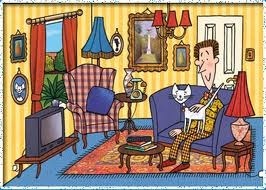 From Mr Pod and Mrs Piccalilli (illus by Nick Sharrat)Hello. I’m a little trepidatious about visiting the Picture Book Den, even as a Guest. Apart from MR POD AND MRS PICCALILLI, which I worked on with the illustrious Nick Sharrat, my “picture books” are known in the book trade as “early readers”, a term often spoken with a slight lowering of the voice. You won’t find the early readers in bookshops like Waterstones or submitted for awards.
From Mr Pod and Mrs Piccalilli (illus by Nick Sharrat)Hello. I’m a little trepidatious about visiting the Picture Book Den, even as a Guest. Apart from MR POD AND MRS PICCALILLI, which I worked on with the illustrious Nick Sharrat, my “picture books” are known in the book trade as “early readers”, a term often spoken with a slight lowering of the voice. You won’t find the early readers in bookshops like Waterstones or submitted for awards.Nevertheless, I – and others like me - write the books for enjoyment and for the pleasure of young readers. Unlike the traditional reading scheme, the various series that I write for have no set of established characters. There’s no single setting and certainly no running reference to a magic key.
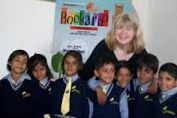 Yes there’s a word count, but that’s all. I once tried writing to briefs based on a list of phonics. I found them impossible to write, and I wasn’t sorry. I don’t do lists. The vocabulary I use comes from years of hearing young children read – as a parent and as a teacher – and a love of rhyme and rhythm and simple wordplay. I write using familiar words, livened up with the odd interesting and intriguing word that they might have come across.
Yes there’s a word count, but that’s all. I once tried writing to briefs based on a list of phonics. I found them impossible to write, and I wasn’t sorry. I don’t do lists. The vocabulary I use comes from years of hearing young children read – as a parent and as a teacher – and a love of rhyme and rhythm and simple wordplay. I write using familiar words, livened up with the odd interesting and intriguing word that they might have come across.I must say that these books are a pleasure to write once you’ve got the idea. There’s none of the plate-spinning giddiness that comes with trying to manage a complex plot when you know guests are about to arrive. Also, there’s the definite deadline to encourage you to get on with the writing process, to refine your words and phrasing, just as Malachy Doyle’s described in his recent post.
You work to the brief – which is a word count and the number of spreads - and you know your idea is, potentially wanted. Early readers seem to have a faster publishing cycle so you may even see your book within nine months.
Oh! Assuming you actually have an idea? That’s always the problem.
So, where have I got my ideas from?
Some come from school situations as I do a lot of school visiting.
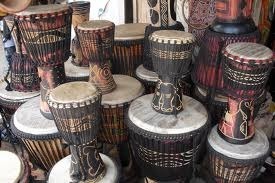 AT NOISE! arrived because I heard a teacher at a weekly djembe drumming class talk about the drum group he’d set up in his primary school. Which kids, I pondered, would be good at drumming? Answer: the fidgety kids, the ones who can’t help tapping or clicking or making a noise. But plot? Suppose the kids thought they were in trouble with their teacher when what he wanted them for was to form a school drum group? Happy ending!
AT NOISE! arrived because I heard a teacher at a weekly djembe drumming class talk about the drum group he’d set up in his primary school. Which kids, I pondered, would be good at drumming? Answer: the fidgety kids, the ones who can’t help tapping or clicking or making a noise. But plot? Suppose the kids thought they were in trouble with their teacher when what he wanted them for was to form a school drum group? Happy ending!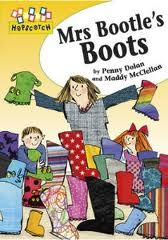 Here’s another school based idea: MRS BOOTLE’S BOOTS. Outside a school I visited stood rows of brightly-painted welly boots, each a colourfully blooming “flowerpot”. So I created a couple of children waiting for a delayed mum (Oh, the guilt, the guilt!), set them helping a grown-up sort out a box of lost-property wellies, let the mum bring in a tray of bedding plants to say sorry – and there you are: the welly planting plot. (And I sent a copy to the teacher involved with the real blooming boots!)
Here’s another school based idea: MRS BOOTLE’S BOOTS. Outside a school I visited stood rows of brightly-painted welly boots, each a colourfully blooming “flowerpot”. So I created a couple of children waiting for a delayed mum (Oh, the guilt, the guilt!), set them helping a grown-up sort out a box of lost-property wellies, let the mum bring in a tray of bedding plants to say sorry – and there you are: the welly planting plot. (And I sent a copy to the teacher involved with the real blooming boots!)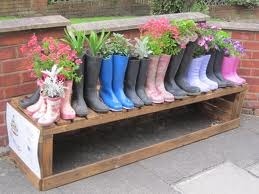
Nevertheless, the “school idea” comes with a warning. Schools change, both in curriculum and in what’s acceptable. Those wellies might have been part of a gardening club. The drums might be a new school music initiative. The funding for both may now have dried up so my clever little stories no longer link into school requirements. Helping sort old boots and shoes may even have become, in some schools, a health and safety issue. It’s always useful to check on current practice in schools and classrooms.
Note that both these early reader books are specific to a certain school setting. Such ideas would have no chance of being sold for a global market. However, it does mean that such stories can be about people rather than generic animals.
Sometimes commissions arrive. However, even a traditional tale needs thinking about. Take, for example, THE LITTLE RED HEN, where the hen finds the grain of wheat and the other animals won’t help. The plot where she has to do every task herself?
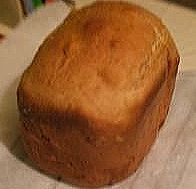 I decided my trio of unhelpful animals would not be the cat, the pig and the goose – or similar - of some versions but “the cat, the dog and the rat”. I chose my creatures because the “cat” and the “rat” made a satisfying rhyming pattern, and because the set of animals would be known by many children and also because they created no cultural problem for schools.
I decided my trio of unhelpful animals would not be the cat, the pig and the goose – or similar - of some versions but “the cat, the dog and the rat”. I chose my creatures because the “cat” and the “rat” made a satisfying rhyming pattern, and because the set of animals would be known by many children and also because they created no cultural problem for schools. However, there was also the ending to manage. The Little Red Hen does all she must do, bakes her bread and then? Eats it all up herself - which makes her a greedy vindictive character? Not nice! So my Little Red Hen ends by “calling all my little chicks to help me eat the bread”. Rightness is restored. This might seem like a tiny moment, but in early reader and picture book texts, all is done through tiny moments.
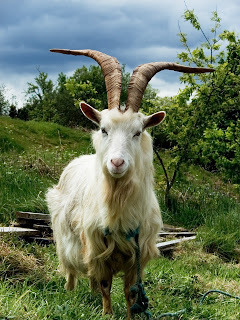 Lately there’s been a demand for the “reversed traditional story” idea. Soon after having my knee nipped by a goat at a pet farm, I dreamed up LITTLE TROLL, whose happy, friendly under-the-bridge world is disturbed by the arrival of three bad goats.
Lately there’s been a demand for the “reversed traditional story” idea. Soon after having my knee nipped by a goat at a pet farm, I dreamed up LITTLE TROLL, whose happy, friendly under-the-bridge world is disturbed by the arrival of three bad goats. Note: if I had a picture-book-writing motto, it would be “always think twice.” Or more than twice. As I wrote the word “billy goat”, I “thought twice” and re-wrote the word. In the book they have, appropriately, become the Bully Goats, reminding the young reader of the playfulness of language.
One problem with writing for a series is that the series editor and educational consultant will not want – for a while – a story similar to a book that already exists so if you are a new writer, check through the titles that are already out there. I must add that, less overtly, the “one idea at a time” rule is true of all publishers, expect perhaps for picture books about bears or kittens.
However, ideas can be used for more than one format. During the Darwin “evolution” anniversary, I wrote a couple of small scripts for an educational animation project. Somehow, trying to think up a Twisty Tale, evolution edged into my head again.
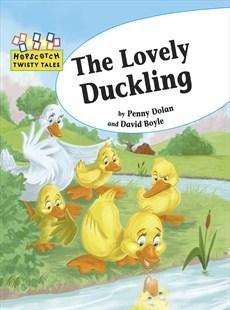 THE LOVELY DUCKLING became a story about how three slightly less-perfect ducklings use their physical differences to develop useful skills, whilst the poor, fussed-over Beauty - the lovely duckling – has to stay in the nest, bored and beautiful, until she opts for the everyday life of the farmyard herself. Call it my revenge on celebrity culture!
THE LOVELY DUCKLING became a story about how three slightly less-perfect ducklings use their physical differences to develop useful skills, whilst the poor, fussed-over Beauty - the lovely duckling – has to stay in the nest, bored and beautiful, until she opts for the everyday life of the farmyard herself. Call it my revenge on celebrity culture!I can’t draw every well, but I do “see” the scenes on the page spreads and write imagining possible illustrations. It’s always a joyous moment when one sees the artist’s own version especially when they have added a twist that I hadn’t imagined.
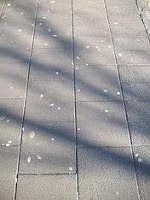 As far as ideas go, it can be useful to think “idea plus genre”, and strengthen an idea by placing it within a recognisable but unlikely frame. My BIG BAD BLOB is a cautionary fantasy tale about the danger of dropping gum, written after having to walk over new pavements daubed with horridly spitty gum. [image error]
As far as ideas go, it can be useful to think “idea plus genre”, and strengthen an idea by placing it within a recognisable but unlikely frame. My BIG BAD BLOB is a cautionary fantasy tale about the danger of dropping gum, written after having to walk over new pavements daubed with horridly spitty gum. [image error] Yuk! So, writing the text, my mind was definitely focused on the horror genre, even though I knew the story needed to be humorous.
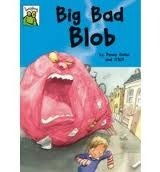 Now that’s another thing. BIG BAD BLOB is a great favourite from six years upwards. Children younger than that don’t appreciated the joke so clearly, although they like the illustrations.
Now that’s another thing. BIG BAD BLOB is a great favourite from six years upwards. Children younger than that don’t appreciated the joke so clearly, although they like the illustrations.[image error]Picture book ideas need to be within the understanding and experience or the “story experience” of the child. Too clever, and the book won’t keep their interest or reach their hearts.
I often use well-known rhythms and rhymes for my writing, and can trace several back to a familiar refrain, such as THE DEEP DARK FOREST. Early reader book words need to sound good in the mouth, so I revise by reading the text aloud over and over again.
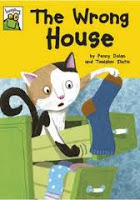 Lost family pets have brought me ideas - THE WRONG HOUSE – and there’s also those bad pigeons. . .
Lost family pets have brought me ideas - THE WRONG HOUSE – and there’s also those bad pigeons. . . Enough! You see, ideas are fluttering about everywhere.
Er, except when you really want them. Like now, today.
Grrr! I’m off to hunt through the old Brain Forest with my trusty Idea Net. If only the thing wasn’t full of holes. Both of them.
Thank you for listening, and happy reading and writing to you all, whatever kind of books you enjoy.
Penny Dolan
Ps. Written with huge thanks to all the illustrators who’ve made my small ideas into real story books.
 To find out more about our Guest Blogger,
To find out more about our Guest Blogger,Penny Dolan, please visit her website www.pennydolan.com
Published on August 04, 2013 00:00
No comments have been added yet.



